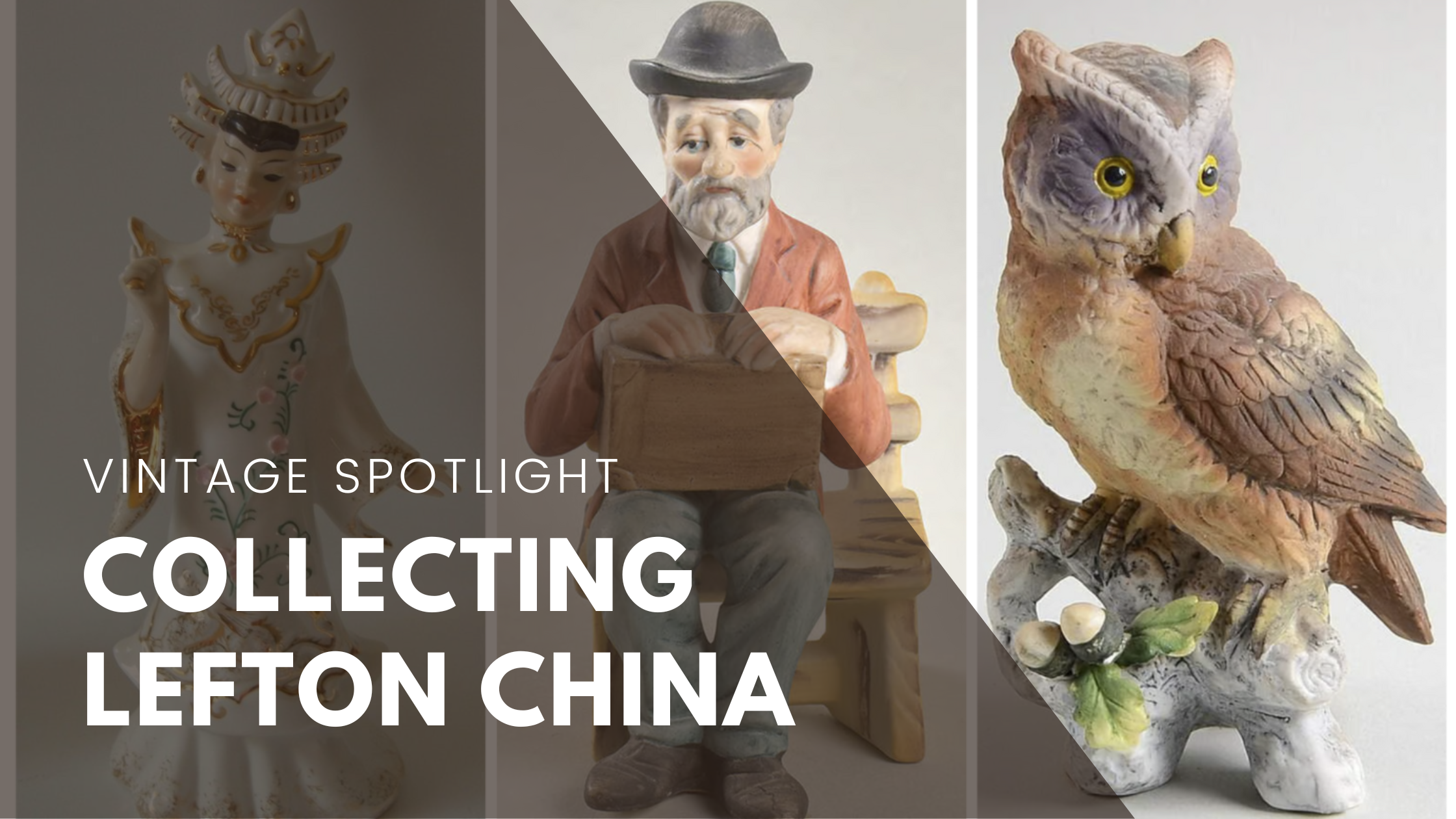Collecting Lefton China: A Window into Mid-Century American Elegance
Welcome to the enchanting world of collecting Lefton China, a hobby that takes you on a journey through time and showcases the artistry of a bygone era. Lefton China, renowned for its elegance and charm, holds a special place in collectors' and enthusiasts' hearts.
For collectors, each piece tells a unique story. Whether it's a whimsical figurine evoking childhood memory or an elegant teapot symbolizing the sophistication of afternoon tea, every item carries a sense of nostalgia and grace. As you delve deeper into the world of Lefton China, you'll discover the artistry behind these timeless pieces and the history that adds to their allure.
Selection of Lefton pieces collected today for their “kitsch” appeal.
Lefton China History
George Zoltan Lefton came to the United States from Hungary in 1939. He had worked in sportswear in Hungary, but his love for fine porcelain soon became a business when he established the Lefton Company in 1941 in Chicago.
During the Pearl Harbor bombing in 1941, many Japanese-owned businesses in Chicago were looted. Lefton helped his Japanese American friend Nunome board up his business. After the war, Nunome assisted Lefton in building relationships with China producers in Occupied Japan.
In August 1945, the Allies occupied Japan after Japan's unconditional surrender. While the Allies planned to help rebuild Japan, they wanted to prevent Japan from rearming itself. Pottery and porcelain manufacturing was considered acceptable by General Douglas McArthur and the Allies.
Lefton was among the first American businessmen to work with the Japanese after World War II. The first pieces of Lefton China, marked "Made in Occupied Japan," arrived in the United States in 1946.
Lefton China, manufactured during the Occupied Japan era, encompasses a range of pieces dating from 1946 to 1952. The designs feature delicate and formal pieces with gold edging, soft floral patterns, and whimsical and playful designs from the 1950s. The Miyawo Company was responsible for producing many of these pieces during this period, known for their excellent quality and reasonable pricing.
Over the years, the Lefton Company has produced numerous products that are highly sought after by collectors, including, but not limited to, cookie jars, holiday items, figurines, teapots, jam jars, planters, pitchers, shakers, Red Hat pieces, wall pockets, and head vases.
At one time, Lefton products were sold in over 10,000 shops in the United States, and given their popularity; it seems unlikely that one could go very far in any antique mall in the country without finding a piece of Lefton China or a Lefton figurine.
You can quickly identify Lefton China by checking the marks on the base of each piece. The identifying marks may vary and can include "Lefton's," "Lefton China," "Geo. Z. Lefton," "G.Z.L.," or simply a letter "L." Some pieces were marked with a maker's mark and a paper label. If the pieces were made between 1946 and 1952, you would find "Made in Occupied Japan" as part of the identifying markings—more on marks below.
Lefton China was produced in Japan until the 1970s. After that, production shifted to Taiwan and Malaysia, but the quality remained consistently high. Sadly, George Z. Lefton passed away in 1996. Eventually, after 60 years of creating beloved collectibles and kitchenware, the Lefton Company was sold to OMT Enterprises in 2005.
Popular Lefton China Collections
Lefton's Occupied Japan pieces ranged from formal pieces, often reproductions of older European forms, to whimsical 1950s modernist designs.
Forms include cookie jars, dinnerware, figurines, head vases, holiday items, jam jars, pitchers, planters, Red Hat pieces, salt and pepper shakers, wall pockets, and vases. The most popular collectibles are angels, bluebirds, dinnerware, Miss Priss, and tea sets.
Lefton made several collector edition series, including the Colonial Village Collection, introduced in 1987, Historic American Lighthouses in 1991, and The Great American Carousel Collection in 1995.
Popular dinnerware patterns include Americana, Blue Paisley, Cardinal, Heritage Brown, Heritage Green, Green Holly, Holly Candy Cane, Poinsettia, Rose Chintz, Violet Chintz, and Wheat.
Lefton China Porcelain – Marks
A fired-on trademark or a paper label identifies most Lefton pieces. Numbers found on pieces are item identification numbers. When letters precede a number, it is a factory code. For example, "SL: denotes Nippon Art China K. K.
"Made in Occupied Japan" is found on pieces made between 1946 and April 1952.
Arched "LEFTON'S" above arched "OCCUPIED" over "JAPAN."
Script "Lefton" with a crown above "n."
"Lefton China" in an arch above the crown with script "Hand painted" in reverse arch beneath. Also found with "MADE IN JAPAN" or "Reg. U. S Pat. Office" underneath.
Script: "G. Z. Lefton" above "CREATION."
"LAMORE CHINA / ENTIRELY HAND / MADE/ G.Z.L. USA / MADE IN /OCCUPIED JAPAN. "
Foil or paper labels:
1946-1953: Large crimson label with gold or silver trim, "Lefton's Exclusive Japan."
1953-1971: Red lave with gold or silver trim, "Lefton's Reg. U.S. Pat. Off. Exclu. Japan."
1960-1983: Lefton Trademark Exclusive Japan.
1986 and later: Lefton Trademark Exclusive Taiwan.
Collecting Lefton China is not just a hobby; it's an extraordinary adventure that allows As new discoveries are made, the allure of the hunt and the satisfaction of adding a prized piece to our collection only grow stronger. It's a hobby that encourages continuous learning as we dive into historical research, pattern identification, and the nuances that distinguish genuine Lefton China from imitations. enthusiasts to connect with history, art, and the enduring beauty of finely crafted porcelain pieces.
In the end, the allure of Lefton China lies not only in the pieces themselves but also in the emotions and memories they evoke. Whether we've inherited them from our ancestors or found them in antique stores, each piece carries a unique story, connecting us to the past profoundly.











